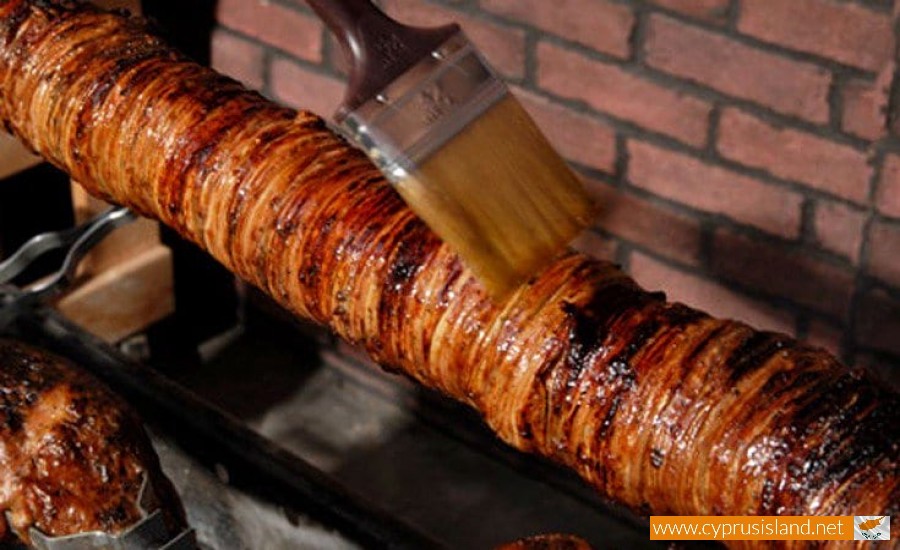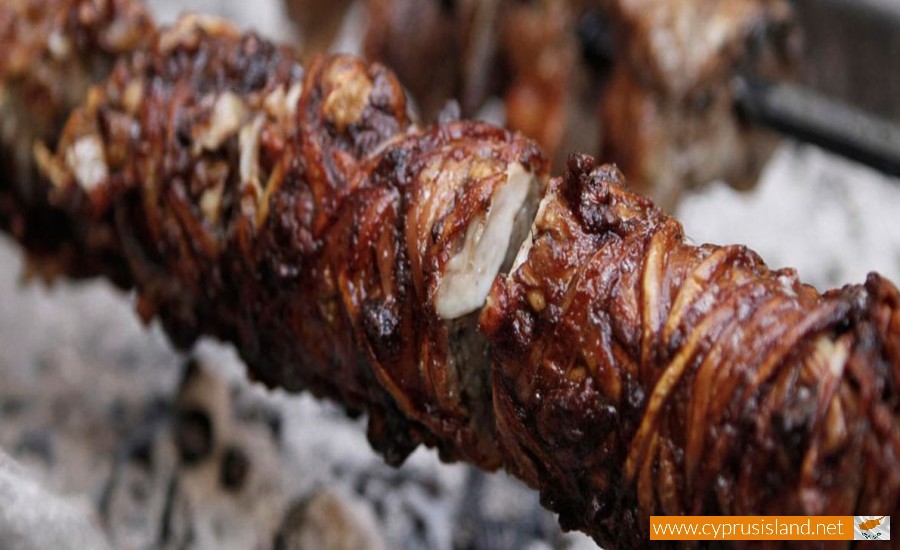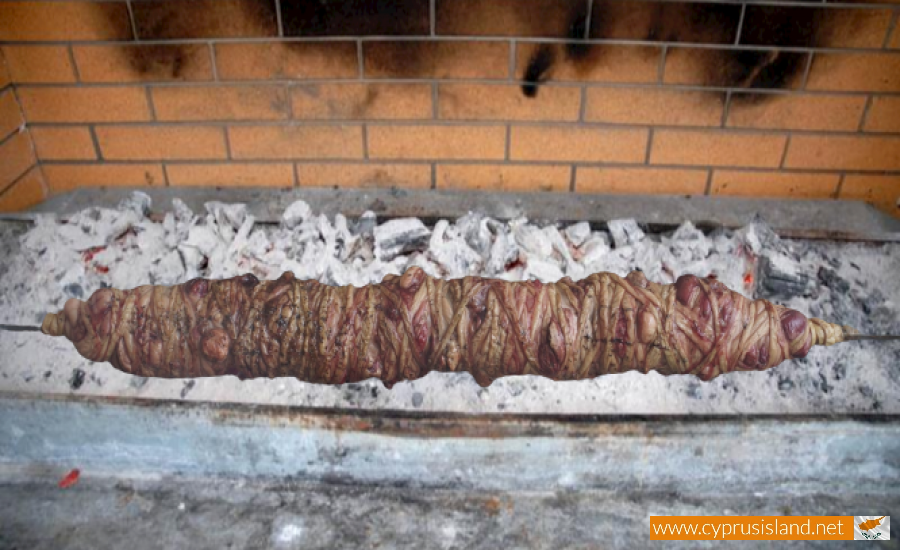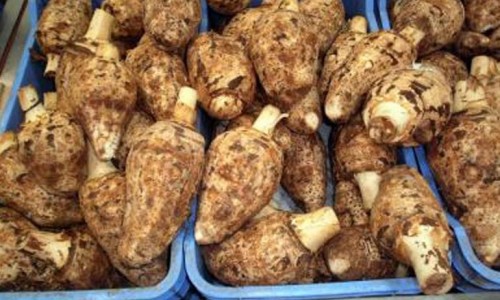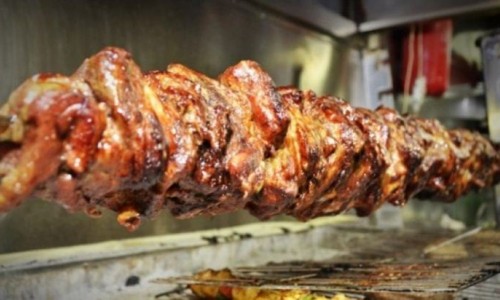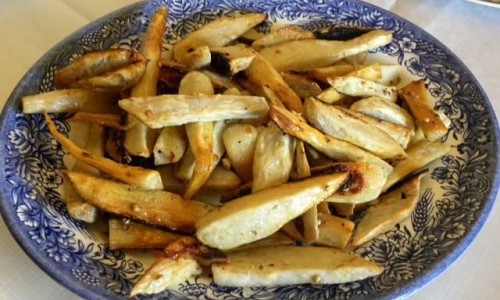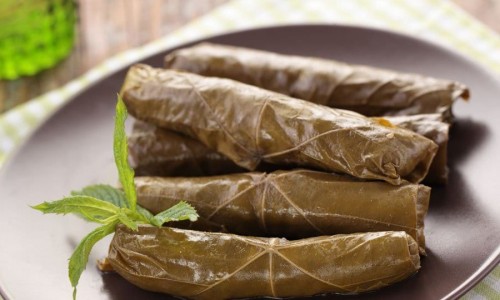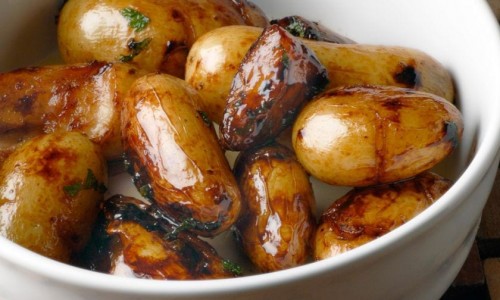Kokoretsi
Kokoretsi is a dish with deep roots in Greek culinary traditions, embodying the essence of rustic, rural cooking passed down through generations. With its rich flavors, complex textures, and cultural significance, kokoretsi remains a symbol of festivity and tradition. Whether you're at a family gathering, a holiday celebration, or a neighborhood barbecue, this dish carries a story of heritage and shared communal joy.
Kokoretsi is a dish traditionally made from lamb or goat offal, typically consisting of the intestines, heart, liver, and other internal organs. These ingredients are meticulously cleaned, marinated, and then wrapped in lamb caul fat, a membrane surrounding the internal organs. The wrapped package is skewered on a rotisserie and roasted slowly over an open flame or in an oven.
The result is a tender, flavorful meat that is crispy on the outside and juicy on the inside, infused with aromatic herbs, spices, and the unique essence of the lamb or goat organs. In addition to the offal, kokoretsi often contains seasonings like garlic, oregano, thyme, and various other Mediterranean spices, depending on the regional variation.
The history of kokoretsi is deeply embedded in Greek culinary traditions, where it is considered an essential part of rural cooking. The dish is believed to have originated with the ancient Greeks, who utilized every part of the animal in their cooking, a practice known as nose-to-tail eating. This practice ensured that nothing went to waste and reflected the resourceful nature of traditional Mediterranean cuisine.
Kokoretsi gained further prominence during the Byzantine Empire, when it became a popular festive dish, especially during Easter celebrations. In Greece, kokoretsi is often served as a special dish during Easter, where it is roasted on a spit alongside lamb, symbolizing the renewal of life and the coming of spring.
Ingredients and Preparation
The ingredients for kokoretsi are simple yet require great care and attention during preparation. The primary components are lamb or goat offal, caul fat, and a variety of seasonings. Here’s a breakdown of the process:
- Offal (Organ Meat): The meat typically used for kokoretsi includes lamb or goat intestines, liver, heart, and sometimes kidneys. These meats are rich in flavor and absorb the seasonings well.
- Caul Fat: This thin, net-like membrane surrounds the animal’s intestines and is used to wrap the offal. The caul fat helps to keep the meat moist during cooking and gives the final dish a crispy, golden exterior.
- Seasonings: Common seasonings include salt, pepper, garlic, oregano, thyme, and a variety of spices. These ingredients are rubbed onto the offal to infuse the meat with flavor before it is wrapped in the caul fat.
- Skewering and Cooking: The wrapped offal is skewered onto a long metal or wooden spit, and then slowly roasted over an open flame or in a traditional oven. The cooking process can take several hours, allowing the meat to become tender and caramelized, with a deliciously crispy exterior.
- Serving: Once cooked, kokoretsi is typically sliced into pieces and served on a platter. It is often accompanied by freshly baked bread, salads, or other side dishes, and is enjoyed with a glass of wine or ouzo.
Kokoretsi is not just food; it is a cultural experience. Its preparation and consumption are often communal activities, bringing people together around the fire. In Greece, kokoretsi is frequently prepared during significant holidays and celebrations, especially Easter, when families and friends gather to celebrate the resurrection of Christ.
During Greek Easter, kokoretsi is often roasted alongside a whole lamb, with both dishes representing the renewal of life and the joy of the festive occasion. The dish is a symbol of familial love, as it requires the collaboration of many hands, from cleaning and seasoning the offal to turning the spit over the fire.
The process of making kokoretsi also honors the animal and utilizes every part of it, adhering to a philosophy of minimizing waste. In rural villages, this dish was often prepared by families who raised their own livestock, making it a way to celebrate the bounty of their work and share the fruits of their labor.
Though kokoretsi is enjoyed throughout Greece, each region has developed its own unique spin on the dish. Let’s explore some of these variations:
- Greek Kokoretsi: Greek kokoretsi is typically seasoned with garlic, oregano, and thyme, and roasted on a spit over an open flame or in an oven. It’s often served with a side of bread and a simple salad of tomatoes, cucumbers, and olives. In some regions of Greece, particularly in the Peloponnese, the offal might be spiced with additional ingredients like cinnamon or cloves for a more complex flavor profile.
- Cypriot Kokoretsi: In Cyprus, kokoretsi is made with a mix of lamb and pork, reflecting the island's unique culinary influences. The seasoning is also different, with a focus on aromatic spices like coriander and bay leaves.
While kokoretsi is an incredibly flavorful and hearty dish, it is not for everyone due to its rich ingredients and preparation method. The use of offal means that the dish is quite high in cholesterol and fat, though it is also packed with essential nutrients such as protein and iron.
In recent years, there has been a growing interest in sustainable and ethical eating practices, leading some people to seek out organ meats for their nutritional value and their role in minimizing food waste. As such, kokoretsi has found a new audience among those interested in nose-to-tail eating and more sustainable food practices.
Kokoretsi remains one of the most cherished and unique dishes in Greek cuisine, a testament to the enduring cultural traditions of the Mediterranean. Whether served during a festive occasion or as a simple treat at a neighborhood gathering, kokoretsi continues to bring people together, offering a delicious taste of history and a connection to the land and its bounty.
For those who enjoy bold flavors, rich textures, and a dish with a history, kokoretsi stands as a culinary experience that tells a story of generations past and a tradition that will continue to thrive for years to come.


